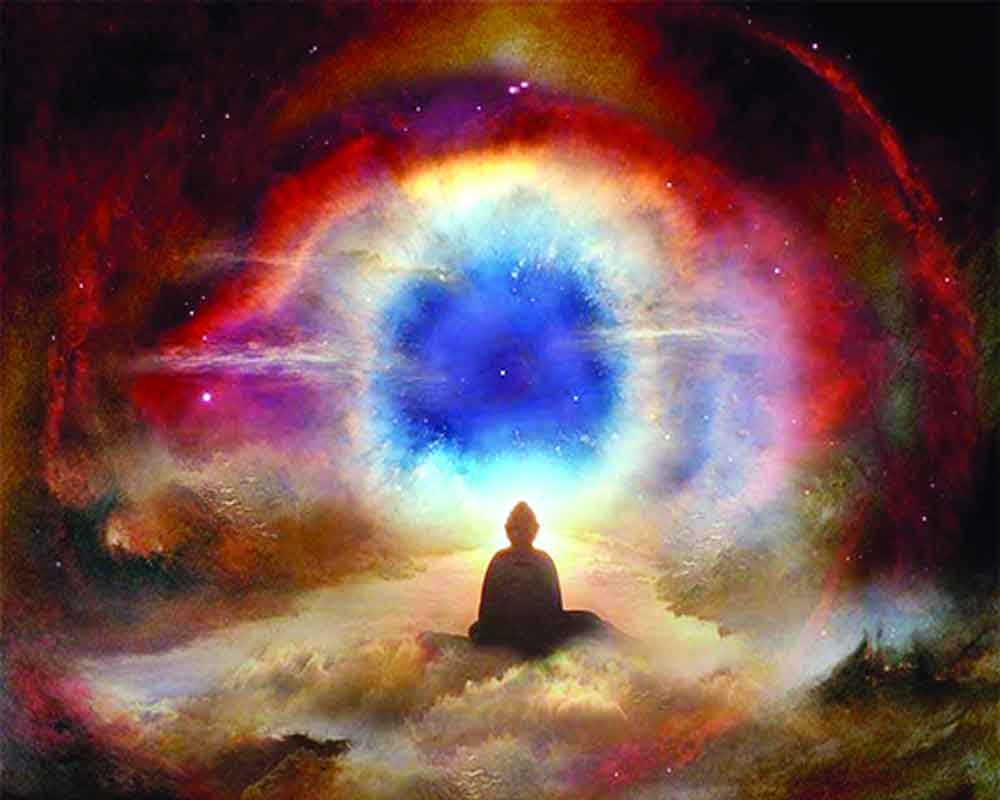Buddhism and Quantum Physics | 3 Profound Parallels
At first glance, Buddhism and quantum physics seem to belong to entirely different worlds . One rooted in meditation, compassion, and inner awakening; the other in equations, laboratories, and particle accelerators. But look deeper, and both begin to peel back the layers of reality, questioning what we know and how we know it. Buddhist teachings invite us to see the world as ever-changing, interconnected, and shaped by the mind. Quantum physics, meanwhile, shows us that the universe behaves in ways that defy classical logic . Such as particles can be waves, objects can be entangled across space, and observation can alter reality. In this article delight, we explore five profound parallels between Buddhism and quantum physics that challenge the boundaries of science, spirituality, and self.
Buddhism and Quantum Physics | 3 Profound Parallels
Illusion of a Fixed Reality
Buddhism: Anicca (अनिच्चा) and Anatta (अनत्ता)
In Buddhism, Anicca refers to impermanence . Its the idea that all conditioned phenomena are constantly changing. Anatta means non-self . Its the doctrine that there is no permanent, unchanging self or soul in living beings. These ideas are central to Vipassana (विपश्यना) meditation, which reveals the transitory nature of sensations and emotions. And the world we perceive is a Māyā (माया) , a mental construct, not an ultimate reality.
Quantum Physics: Superposition, Probability Waves, Uncertainty Principle
Quantum physics shows that particles like electrons exist in superposition, meaning they can be in multiple states at once. The wavefunction (Ψ) represents all possible states until a measurement collapses it. Heisenberg’s Uncertainty Principle states we cannot precisely know both the position and momentum of a particle , reality at the quantum level is not fixed but probabilistic.
🔍 Insight: Just as Buddhism teaches that form is illusion, quantum physics reveals that matter doesn’t have definite properties until observed. Both dismantle the illusion of a fixed, objective reality.
Emptiness and Wave-Particle Duality
Buddhism: Śūnyatā (शून्यता), Nāgārjuna’s Madhyamaka (माध्यमक दर्शन)
Śūnyatā, or emptiness, implies that all things are devoid of Svabhāva (स्वभाव) , which is intrinsic existence. According to Nāgārjuna’s philosophy, things exist only in dependence on other conditions . There is no inherent substance. This ties closely with the Two Truths Doctrine (द्वै सत् सिद्धांत): conventional truth vs. ultimate truth.
Quantum Physics: Wave-Particle Duality, Complementarity Principle
In experiments like the double-slit experiment, particles behave as waves when unobserved and as particles when observed. This duality defies classical logic. Bohr’s Complementarity Principle asserts that particle and wave aspects are complementary . Both are needed to fully describe quantum behavior, yet both cannot be observed simultaneously.
🌊 Insight: Just as Buddhist emptiness denies fixed identity, wave-particle duality denies fixed properties of matter. What something is depends entirely on how and when you look at it.
Interconnectedness and Quantum Entanglement
Buddhism: Pratītyasamutpāda (प्रतित्यसमुत्पाद), Dharma Dhātu (धर्मधातु)
Dependent Origination (Pratītyasamutpāda) teaches that everything arises in dependence upon causes and conditions. There is no isolated entity; everything is interwoven in a web of cause and effect. Dharma Dhātu refers to the ultimate realm where all things interpenetrate , a field of infinite connectivity.
Quantum Physics: Entanglement, Nonlocality, Bell’s Theorem
Quantum Entanglement is a phenomenon where two particles become linked and instantly influence each other, even across large distances. Bell’s Theorem proved that nonlocal interactions are real, challenging classical ideas of space and separation.
🌐 Insight: Just as Buddhism denies separateness of beings, entangled particles defy separateness in space. Both point toward a fundamentally interconnected universe, where change in one element reverberates through the whole.
Final Takeaway | 3 profound parallels of Buddhism and Quantum Physics
Perhaps the most beautiful lesson we can draw from this convergence is not about validating one through the other, but realizing that wisdom can emerge wherever there’s a sincere search for truth . Whether through meditation or mathematics, through the stillness of the Himalayas or the chaos of a particle collider. Buddhism and quantum physics may differ in tools and language, but they converge on a subtle point: reality is not what it seems. So perhaps these parallels are not about proving one right or wrong, but about understanding that truth can wear many robes . Sometimes saffron, sometimes a lab coat.
Further insights : Tao Of The Physics https://amzn.to/3F2miyU
Read also : Decoding the Swastika: Spiritual Meaning Behind Its Four Arms https://thebrightdelights.com/decoding-the-swastika-spiritual-meaning-behind-its-four-arms/
